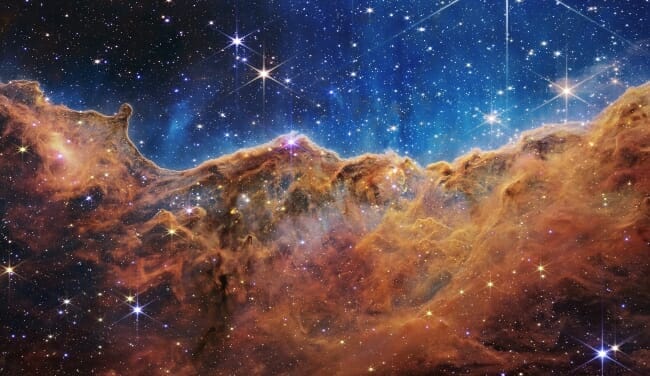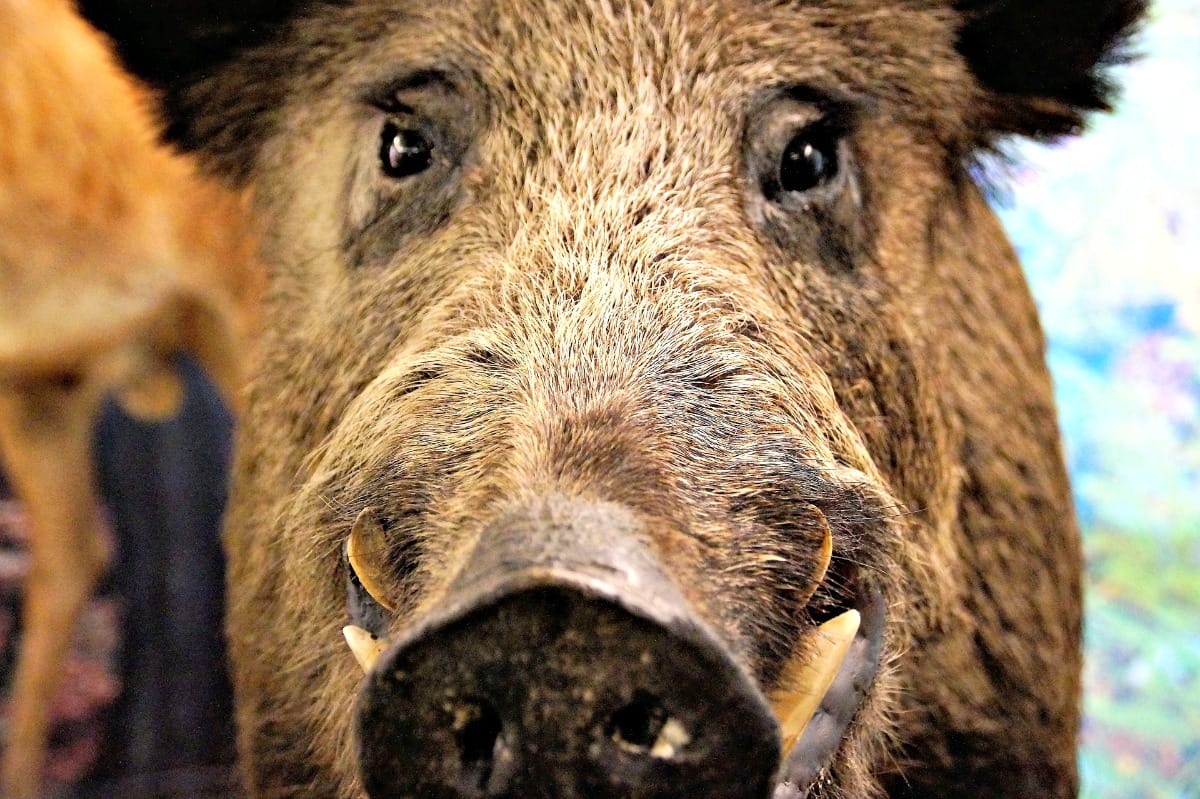

Uh oh...
It appears that you're using a severely outdated version of Safari on Windows. Many features won't work correctly, and functionality can't be guaranteed. Please try viewing this website in Edge, Mozilla, Chrome, or another modern browser. Sorry for any inconvenience this may have caused!
Read More about this safari issue.

On Christmas Day in 2022, the James Webb Space Telescope launched from Earth and traveled nearly a million miles into space. The first pictures taken by the telescope were released in July. These photos fire the imagination of what exists beyond our planet and solar system. Although the stars featured in these photos are too far away to see from Earth, there are many opportunities for stargazing in Arkansas this year.

Arkansas’s darkest skies tend to be outside of the central radius of Little Rock and its bright lights. Light pollution is the determining factor on how much is visible in the night sky, with the exception of weather, of course. One of the best places to stargaze is in the Buffalo National River area. In 2019, the park became the first International Dark Sky Park in Arkansas, a designation made by the International Dark-Sky Association. The park staff achieved this by replacing outdoor lighting with more dark sky friendly options and making sure outdoor lighting beamed down instead of up into the sky. The national park has primitive and tent camping, as well as some cabins for rent. The park has also hosted stargazing events in the past. If you’re planning a visit, check out the Buffalo National River Park calendar to see if you can join in.
Another popular place for stargazing in Arkansas is Hobbs State Park in Northwest Arkansas. This is Arkansas’s largest state park, and the Sugar Creek Astronomical Society makes this park their home for half a dozen astronomy nights it holds each year. At these free, public events, a society member leads a discovery class inside the visitor’s center so attendees can understand what they’ll see in the night sky. After sunset, the group heads outside to a dozen telescopes for attendees to peer through. These are family-friendly events and all of this year’s events can be found on the Sugar Creek Astronomical Society Facebook page, or on the Hobbs State Park calendar. This year’s events take place Jan. 21, March 26, May 21, July 23, Sept. 17 and Nov. 4. The Sugar Creek Astronomical Society also holds monthly meetings for members with guest speakers, informational sessions and more.

Other opportunities for stargazing in Northwest Arkansas include Withrow Springs State Park, White Rock Wilderness Area and Lake Fort Smith. The Arkansas Oklahoma Astronomical Society uses Lake Fort Smith State Park for their scheduled star parties as well as member meetings and events. Find out when the 2023 events will be held at the Lake Fort Smith State Park calendar or aoas.org.
NWA Space is holding astronomy nights this year in Kathleen Johnson Memorial Park in Lowell. These events are free and begin with a short public lecture before viewing the stars. They’re held outdoors and attendees should dress for the weather and bring a folding chair and a flashlight covered with a red balloon or red cloth. NWA Space is a nonprofit organization that advocates for STEM education and the creation of a science center in Northwest Arkansas. Follow the NWA Space Facebook page for more starry events.

In Central Arkansas, the Central Arkansas Astronomical Society owns and operates the River Ridge Observatory north of Lake Maumelle. The group holds monthly meetings at the observatory which are open to members and the public. The society also hosts public star parties in the warmer months. The first in 2023 will be held March 18 at Woolly Hollow State Park. On April 29, CAAS will host a National Astronomy Day event at Pinnacle Mountain State Park. Find all CAAS public meetings and star parties on their calendar at caasastro.org.
If you want to view the stars in Central Arkansas without worrying about the weather or light pollution, plan a visit to the Dr. Edmond E. Griffin Planetarium located on the University of Central Arkansas Campus in the Conway Corporation Center for the Sciences. The planetarium is open to the public for shows every Friday and Saturday night. The shows are one hour and begin at 7 p.m. and they include an introduction to the night sky and a full dome production, which changes each weekend. Upcoming productions include “River of Bears,” “Phantom of the Universe,” and “Edge of Darkness.” Admission is free, although donations are encouraged. Find out more about UCA’s Griffin Planetarium and all upcoming shows at https://uca.edu/physics/planetarium/.
For those located on the eastern side of the state who want to find organized stargazing events, the Memphis Astronomical Society will hold several public star parties at Village Creek State Park in Arkansas. The first star party will be held Saturday, April 15, at the park. Astronomical society members will be on hand with telescopes for public viewing of the stars. Keep up with the Village Creek star parties at arkansasstateparks.com or memphisastro.org.

Although it’s not stargazing, eclipses are another interesting viewing opportunity. On Oct. 14, 2023, Arkansas will experience a partial solar eclipse as the moon moves across the sun. The eclipse starts at 10:28 a.m. and ends at 1:32 p.m. If the weather cooperates, it should be visible for many in Arkansas. Remember to never look directly at the sun during an eclipse. Instead, find some safe ways to view the eclipse at https://www.exploratorium.edu/eclipse/how-to-view-eclipse. Of course, in 2024, Arkansas will be in the center of a total solar eclipse, an event that is likely to draw thousands to the area. It’s not too early to start planning how you want to watch this eclipse on April 8, 2024.
Finally, for those who want to practice stargazing on their own, several library systems in the state have telescopes which can be borrowed. This is a great way to learn a little more about stargazing and astronomy in general, all for free. Participating libraries include Central Arkansas Library System (CALS) and several libraries in Northwest Arkansas, including Fayetteville Public Library and Bentonville Public Library. Check with your library to see if a telescope is available.

Stargazing in Arkansas is a wonderful way to learn about the universe, bring families together and appreciate Arkansas’s natural beauty, too. Below are links to further resources for stargazing and learning even more about the stars in Arkansas. Read more about other things you and your family can do during Arkansas Summer Nights.
Astronomical Societies in Arkansas
Arkansas Oklahoma Astronomical Society
Central Arkansas Astronomical Society
Sugar Creek Astronomical Society
Memphis Astronomical Society (meets in Memphis but occasionally holds events in Arkansas).
Space and Sky Groups
NWA Space
Arkansas Natural Sky Association
Observatories and Planetariums in Arkansas
Griffin Planetarium at the University of Central Arkansas (open to the public)
Reynolds Science Center Planetarium at Henderson State University
The Astronomical Observatory at Arkansas Tech University
Mid-America Science Museum and Planetarium
The Neal Turner Museum of Natural History and Pomeroy Planetarium at the University of Arkansas – Monticello (Open by appointment only).
General Information About Space and Stargazing
NASA
NASA Jet Propulsion Lab (JPL)
Sky & Telescope
International Dark Sky Association
American Astronomical Society
Header Image Credit: ESA/Hubble & NASA, Acknowledgement: Judy Schmidt
We do the work.
You check your email.
Sign up for our weekly e-news.
Get stories sent straight to your inbox!













 Leave a Reply
Leave a Reply
[…] out our guide to stargazing in Arkansas and follow these handy […]
[…] Planetarium | Monticello Learning to read the night sky is an essential skill for pirates and crewmates. Staff offer classes to the public on various […]
[…] around the campfire. Whether you’re roasting marshmallows, telling ghost stories or simply stargazing, fall nights are made for comfort and […]